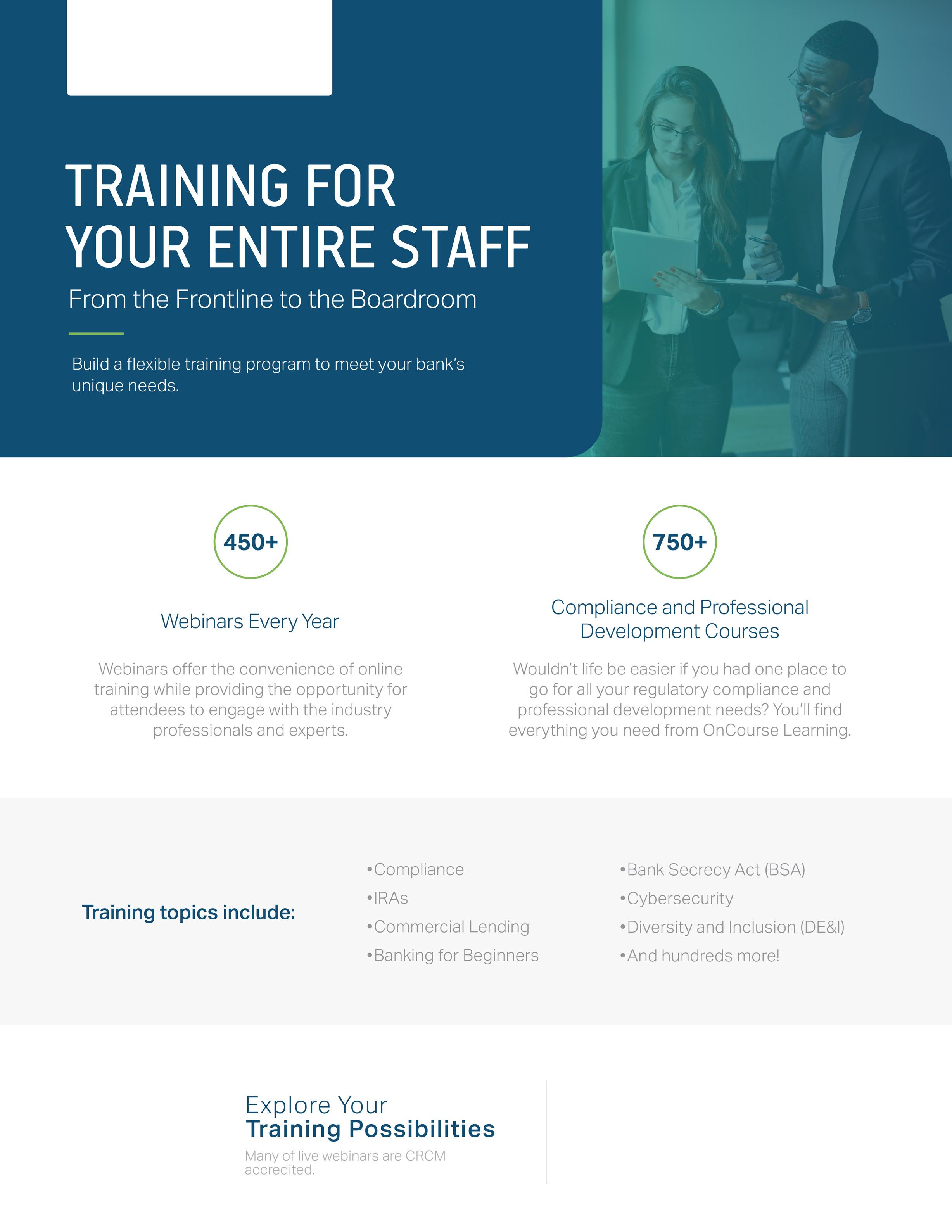
4 minute read
Seven Rules for Optimizing Vendor Contracts
By Patrick Goodwin, President, SRM (Strategic Resource Management)
Banks rely more on vendors and third-party technology providers to improve the customer experience and keep pace with the continuously evolving digital landscape. Fintech providers are well-equipped to design and deliver solutions rapidly, often at a lower cost than in-house development. For these relationships to be successful, banks must navigate contract negotiation and optimization efficiently.
Whether a financial institution is dealing with an existing vendor or coming to terms with a new provider, an inevitable power imbalance looms over the negotiation process for many reasons, including imperfect information and knowledge, limited negotiating skills, or an unobjective view of the underlying economics or alternatives.
To help contract negotiations be more successful, there are seven rules for optimizing vendor contracts:
1. START THE PROCESS EARLY
A comprehensive vendor/contract review is a lengthy exercise. If a financial institution doesn’t begin the process with enough lead time (as early as 24 months), it’s a clear sign to their current vendor that the account is secure, and there’s no need to offer material concessions. The request for proposal (RFP) process can also be lengthy with numerous sequential steps, including document development, distribution to potential suitors, completion, interviews, presentations, and evaluations, not to mention detailed negotiations.
2. DEVELOP A DISCIPLINED APPROACH
There must be a programmatic approach to financial technology contracts, which also means that it is helpful for the bank to assign a Project Lead — most likely the CFO, controller, or, in larger financial institutions, a delegate from the finance department — to be responsible for each agreement. These types of agreements require specialized knowledge, and taking the lead role out of the hands of the individual serving as the vendor’s ongoing main contact point can be financially beneficial. The Project Lead should also set clear priorities for the ongoing relationship and the negotiation process.
3. KEEP YOUR OPTIONS OPEN
Financial institutions should never routinely renew or extend an agreement solely because they’re satisfied with the relationship. If a vendor approaches with an offer to extend at current contract terms, it’s an almost sure sign that money is being left on the table. Based on the typical technology curve, prices usually decline over time — particularly in a competitive market with high fixed costs and a steady stream of new entrants driving competition. The RFP process serves as a valuable opportunity to understand the market better. The evaluation process enables institutions to affirm they have made the best decision and to generate cost savings or other significant improvements in terms and service levels.
4. PAY CLOSE ATTENTION TO RENEWAL TERMS
Most financial services technology contracts include a clause requiring the customer to formally notify the vendor of its intent to revisit the agreement’s parameters at the end of the term. Vendors might argue that such clauses are necessary to ensure continuity of service for mission-critical software and services; however, it’s easy to overlook a required notification date — when a bank does so, the agreement immediately locks in for multiple years at existing rates. Given the general downward trend in technology prices, inaction hands the vendor a clear win. Some common safeguards against this are for a client to deliver written notice of intent to terminate immediately upon signing an agreement, limiting the duration of renewal periods, allowing clients to terminate at will during auto-renew periods, or requiring vendors to alert clients to an upcoming notification date.
5. LEVERAGE OUTSIDE DATA & THIRD-PARTY PARTNERS
Much of the power imbalance in a contract negotiation stems from the vendor’s deep knowledge of the space — precisely the type of expertise the bank aims to leverage through their relationship. Industry benchmarking data, conversations with colleagues at other financial institutions, and other forms of due diligence are all helpful and recommended steps. However, an even more-valuable step is to enlist a partner with similar domain expertise and market insight to assist with vendor selection and contract negotiation. Having someone in your corner who has built a cache of benchmarking data and negotiation proficiency can level the playing field.
6. BE AWARE OF RENEGOTIATION OPPORTUNITIES
Expiration and notification dates aren’t the only contract-altering events that must be tracked. The acquisition of a vendor firm often triggers a renegotiation opportunity. Other operational thresholds — often volume related — may also trigger pricing changes. Renegotiation and pricing clauses can help incentivize vendor and client behaviors, accounting for financial institution-specific needs and providing for the unexpected.

7. REMEMBER THAT RELATIONSHIPS LAST BEYOND THE NEGOTIATION
Although contract negotiation is an important and valuable activity, it should constitute a relatively small portion of a constructive long-term vendor/client relationship. Solid relationships and open communication lines are highly desirable for ongoing operational success and customer service. To optimize negotiation leverage, a united front has to be maintained in the negotiation process. Consider retaining an independent, third-party negotiator to act in your best interest while maintaining respect and diplomacy with your vendors.
Millions of dollars are at stake when negotiating a bank’s portfolio of vendor agreements. Financial institutions need to bring the proper skills to the table to solve the power imbalance in these discussions. These skills can be challenging to obtain, which makes enlisting the assistance of an objective and experienced third-party expert an important part of contract negotiations. Doing so can ultimately result in tremendous cost savings for institutions in the long run.
Patrick Goodwin is president of Strategic Resource Management (SRM), an independent advisory firm serving financial institutions and other industries across North America and Europe. Goodwin has nearly 20 years of contract negotiation experience spanning two dozen distinct specialties. His acquired knowledge of credit and debit card services, M&A contracts, and beyond remains vital to SRM’s continued diversification and success. For more information and details on optimizing vendor contracts, download SRM’s report.












